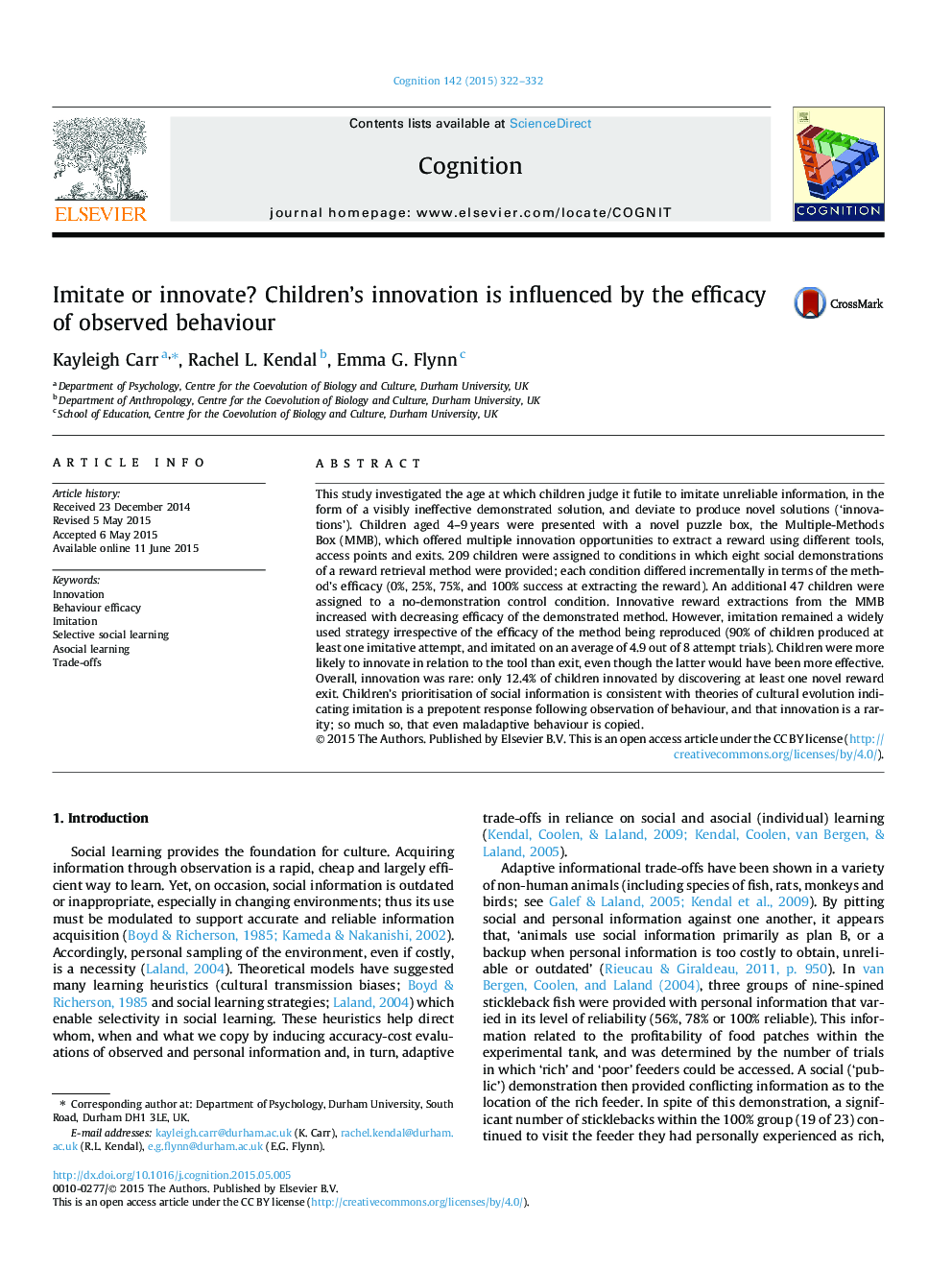| کد مقاله | کد نشریه | سال انتشار | مقاله انگلیسی | نسخه تمام متن |
|---|---|---|---|---|
| 7286864 | 1474125 | 2015 | 11 صفحه PDF | دانلود رایگان |
عنوان انگلیسی مقاله ISI
Imitate or innovate? Children's innovation is influenced by the efficacy of observed behaviour
ترجمه فارسی عنوان
تقلید یا نوآوری؟ نوآوری کودکان تحت تأثیر رفتار مشاهده شده قرار می گیرد
دانلود مقاله + سفارش ترجمه
دانلود مقاله ISI انگلیسی
رایگان برای ایرانیان
موضوعات مرتبط
علوم زیستی و بیوفناوری
علم عصب شناسی
علوم اعصاب شناختی
چکیده انگلیسی
This study investigated the age at which children judge it futile to imitate unreliable information, in the form of a visibly ineffective demonstrated solution, and deviate to produce novel solutions ('innovations'). Children aged 4-9Â years were presented with a novel puzzle box, the Multiple-Methods Box (MMB), which offered multiple innovation opportunities to extract a reward using different tools, access points and exits. 209 children were assigned to conditions in which eight social demonstrations of a reward retrieval method were provided; each condition differed incrementally in terms of the method's efficacy (0%, 25%, 75%, and 100% success at extracting the reward). An additional 47 children were assigned to a no-demonstration control condition. Innovative reward extractions from the MMB increased with decreasing efficacy of the demonstrated method. However, imitation remained a widely used strategy irrespective of the efficacy of the method being reproduced (90% of children produced at least one imitative attempt, and imitated on an average of 4.9 out of 8 attempt trials). Children were more likely to innovate in relation to the tool than exit, even though the latter would have been more effective. Overall, innovation was rare: only 12.4% of children innovated by discovering at least one novel reward exit. Children's prioritisation of social information is consistent with theories of cultural evolution indicating imitation is a prepotent response following observation of behaviour, and that innovation is a rarity; so much so, that even maladaptive behaviour is copied.
ناشر
Database: Elsevier - ScienceDirect (ساینس دایرکت)
Journal: Cognition - Volume 142, September 2015, Pages 322-332
Journal: Cognition - Volume 142, September 2015, Pages 322-332
نویسندگان
Kayleigh Carr, Rachel L. Kendal, Emma G. Flynn,
